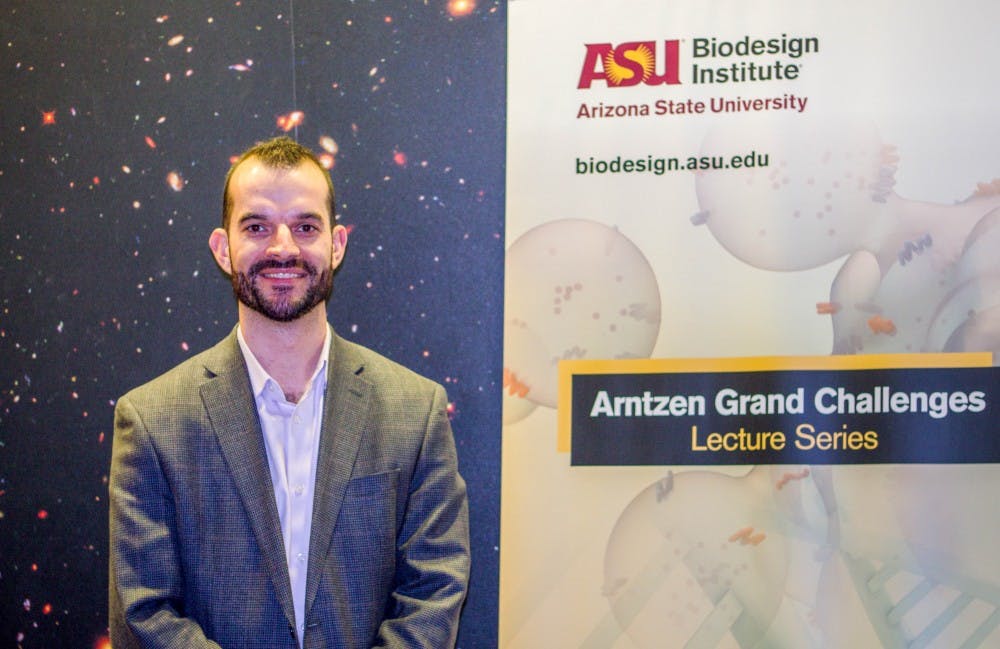ASU researchers are among some scientists looking to advance the future of medicine and biology through the use of single-gene editing technologies, recognizing the importance of gene editing and its long term implications — both negative and positive.
According to the World Health Organization, approximately 10,000 human diseases are monogenetic, meaning they result from a mutation of a single gene. This includes diseases like Huntington’s disease, Tay-Sachs and cystic fibrosis.
One possible use of this technology is to cure the aforementioned diseases. The discovery of clustered regularly interspaced short palindromic repeats, also known as CRISPR, particularly lends itself to this.
CRISPR is a genetic engineering tool that evolved naturally in response to viral infections in bacterial cells that is now being utilized by scientists to edit DNA with extreme precision.
Samuel H. Sternberg, an assistant professor at Columbia University in the Department of Biochemistry and Molecular Biophysics, recently gave a lecture on CRISPR at ASU's Biodesign Institute in early November.
Sternberg explained that CRISPR has a much greater specificity because it recognizes over 20 base pairs, the subunits of DNA.
"As opposed to restriction enzymes which typically recognize around four to six, while a sequence of four base pairs may occur numerous times in a genome, a sequence of 20 is much more likely to be unique," Sternberg said.
He said this is essential because gene alteration through the use of enzymes works by essentially cutting the DNA strand at the recognized sequence. If a sequence scientists are targeting isn’t unique, they will end up with numerous unintended breaks in the DNA strand, Sternberg explained.
This system serves as an archive for the bacteria, allowing it to recognize any viral DNA that it has retained the sequence for, preventing the virus from infecting it.
Due to this, CRISPR also offers a promising new approach to anti-viral drugs and may even offer a new HIV treatment.
Beyond its medical uses, CRISPR even has applications in countless fields beyond biology, including computing and agriculture.
For example, scientists from Harvard successfully used CRISPR to rewrite a DNA sequence into something akin to binary code. Using this methodology, they encoded a gif into DNA.
Here at ASU, CRISPR is being used by a number of researchers due to its low cost and customizability.
Mo Ebrahimkhani, an assistant professor in the School of Biological and Health Systems Engineering and researcher, is among these users.
Ebrahimkhani's research typically centers around topics regarding synthetic and stem cell biology along with tissue regeneration.
"We use CRISPR to guide development of liver tissue," Ebrahimkhani said. "Other than that, we use it for changing the activation and repression of genes."
Sternberg and Ebrahimkhani both identified delivery and toxicity as some of the largest hurdles between current CRISPR/Cas9 technology and the eradication of monogenic diseases and using it in mainstream medicine.
Both mentioned the ethical issues of CRISPR. In recent years, the ethical implications of biological technologies have been thrust into the spotlight.
CRISPR has been scrutinized given the ease with which it can be used to conduct germ line editing, or editing genes which will then be passed onto future generations. This is not an accepted practice in human trials yet because long term affects are still unknown.
Additionally, certain studies have linked CRISPR in human cells to the possible development of cancer as an effect of its use.
Jane Maienschein, the director of ASU’s Center for Biology and Society, said that scientists have not gone through the necessary trials yet for germ line editing to be considered a safe or responsible use of CRISPR technology.
However, she does not object to the use of CRISPR, adding that like most technology, it has a lot of promise to be used for positive purposes, but it can also be used for more morally reprehensible ones.
"It's just great technology," Maienschein said. “I think pretty much everybody agrees that we don't know enough to do wide germ line editing, including editing of embryos in ways that can affect the germ line."
At the end of the day, curing genetic diseases is a form of germ line editing and human genetic engineering that is typically frowned upon.
Currently, scientists are asking questions along the lines of whether this type of technology invites misuse and abuse, if it's inherently unethical and more. At this point however, no clear answer has been found.
"Engineers can make motorcycles, or they can make boats, or they can make bombs," Maienschein said. "It’s up to society to choose what they use."
Reach the reporter at hbutlerr@asu.edu or follow @HS_Robbins on Twitter.
Like The State Press on Facebook and follow @statepress on Twitter.




